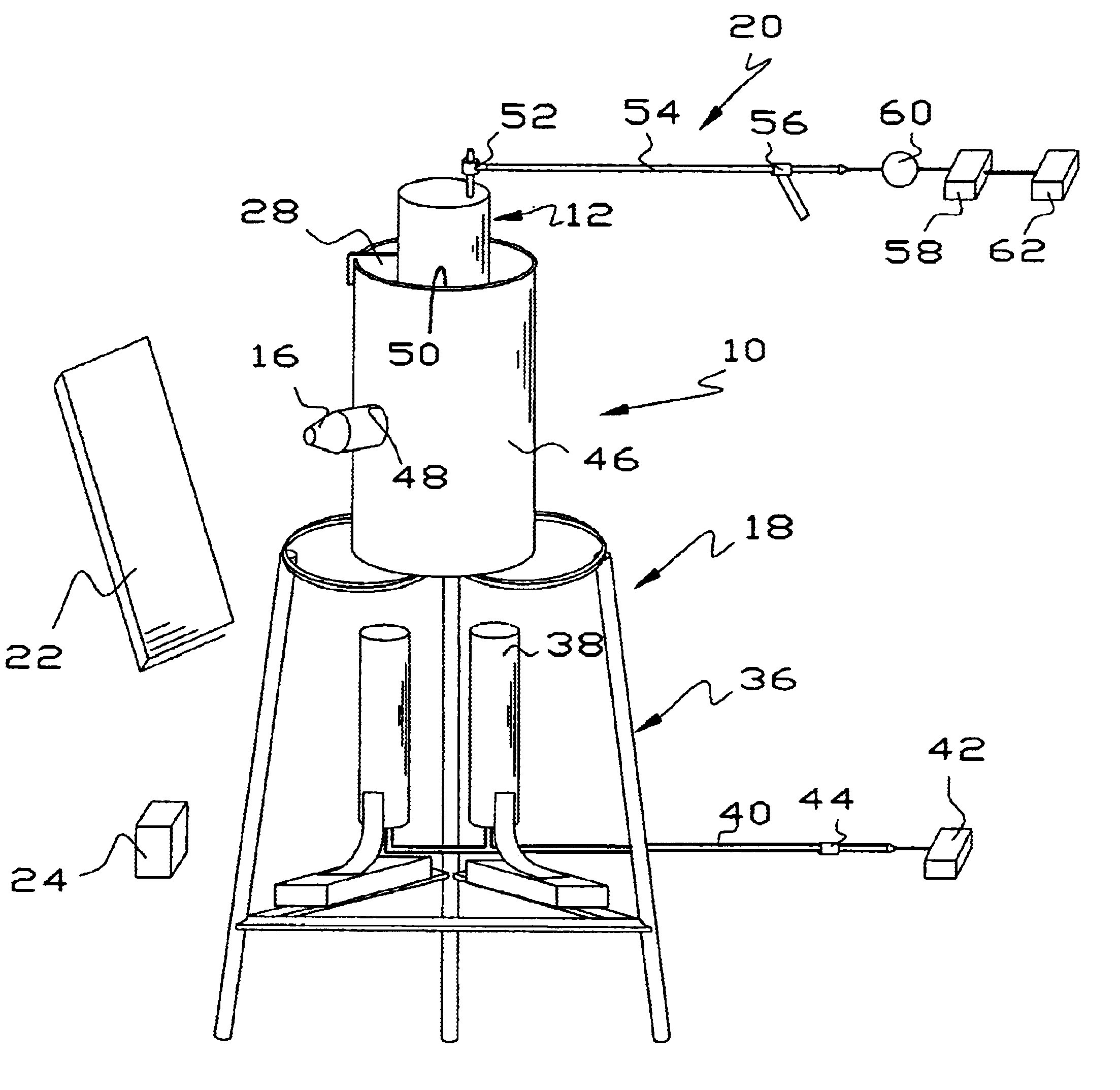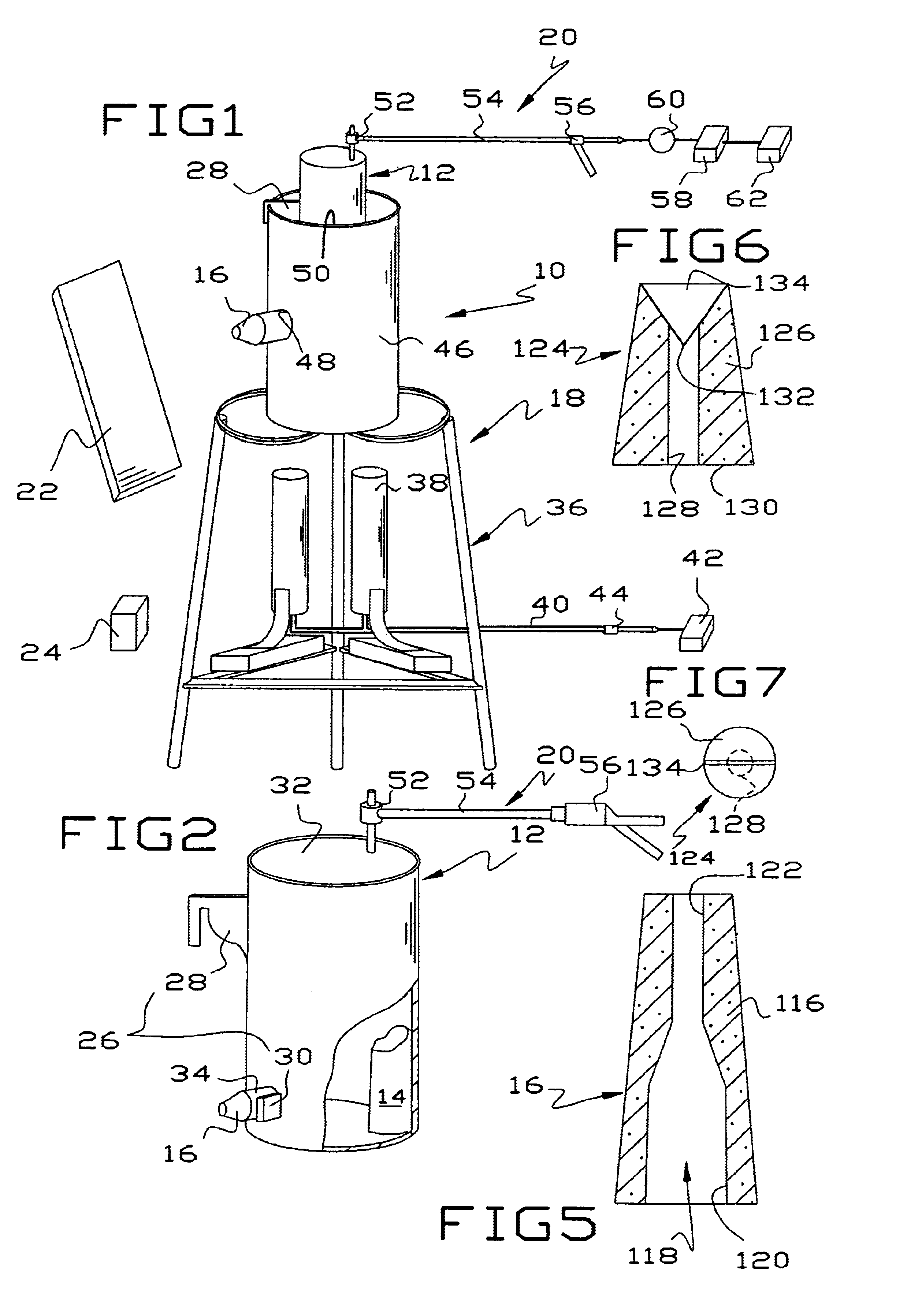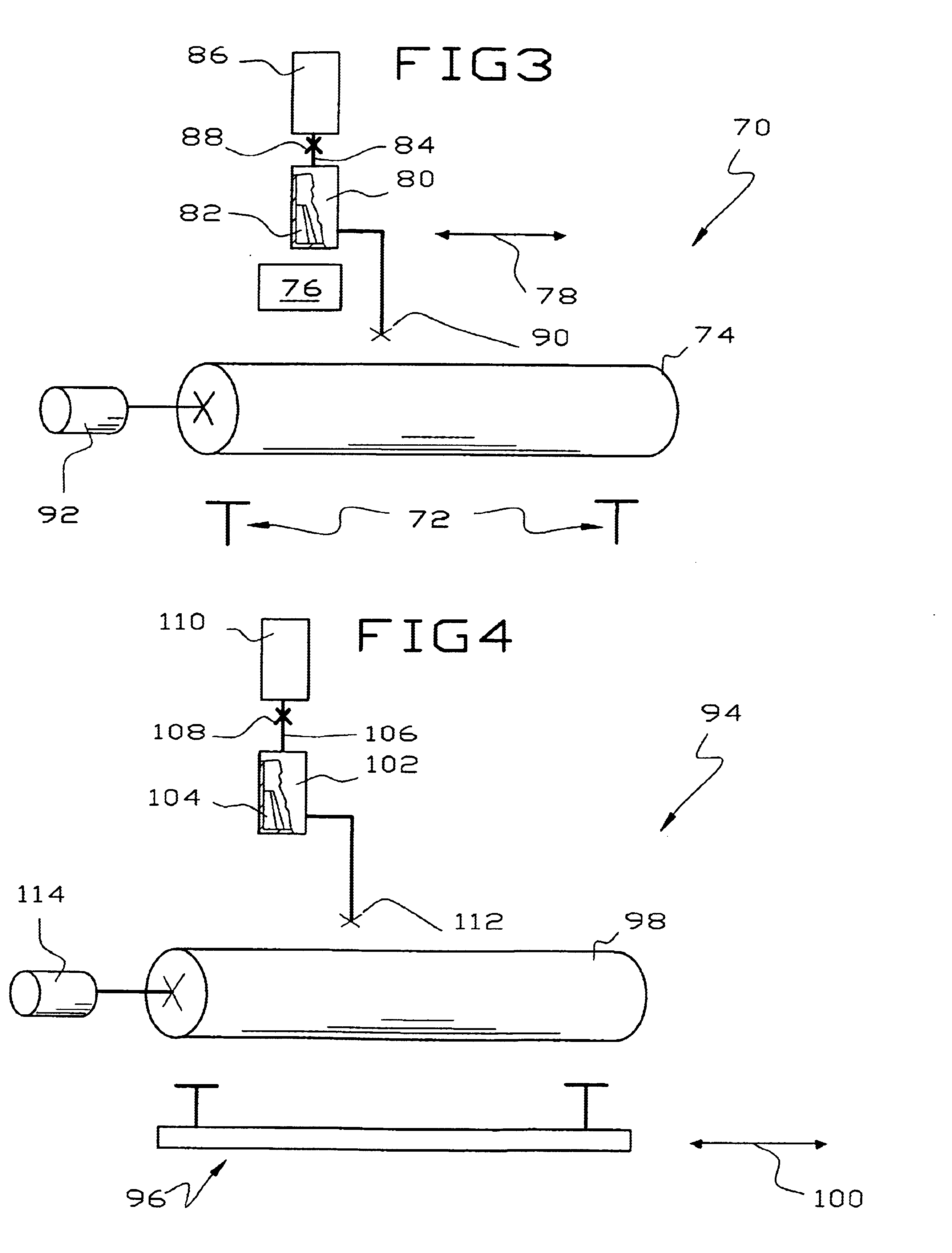Method and apparatus for producing iron article and product
a technology of iron articles and products, applied in the direction of special dispensing means, molten metal supply equipments, rigid containers, etc., can solve the problems of poor pressure, and achieve the effect of preventing rust or corrosion of the underlying iron alloy
- Summary
- Abstract
- Description
- Claims
- Application Information
AI Technical Summary
Benefits of technology
Problems solved by technology
Method used
Image
Examples
example 1
[0046]A 1″ wide×0.1″ thick mild carbon steel strap 8½″ long was wire brushed to remove loose rust and grasped with long handled tongs. The steel strap was heated in the flame of an acetylene torch until it was cherry red. A thermocouple type thermometer revealed the temperature to be 1100° F. Aluminum was heated in a steel container by propane torches in a prototype device substantially identical to FIGS. 1-2, using a nozzle substantially as shown in FIG. 5, until the aluminum began to melt by the formation of aluminum droplets on the surface of the aluminum. Compressed air at 120 psig was delivered by a commercial air compressor into the top of the container propelling a fine aluminum mist out of the ceramic nozzle. The heated steel strap was passed in front of the nozzle and an aluminum layer was deposited on the steel strap. Several aluminum layers were deposited on the steel strap, one after another simply by moving the strap back and forth in front of the nozzle. The steel stra...
example 2
[0047]A ¼″×4″ flat bar was cleaned with a wire brush and heated to cherry red and sprayed with an aluminum mist as in Example 1. After the bar cooled somewhat, but well above ambient, the bar was placed in a vise and was bent 90° into a right angle by using a torch to heat it. The reheated bar was struck with a hammer and bent on the vise. Inspection of the bend showed no cracks or pin holes in the aluminum layer. The aluminized layer could not be buffed off with a wire wheel mounted on a 4″ grinder driven by an electric motor.
example 3
[0048]A ½″×12″×12″ steel plate was heated to cherry red and sprayed with aluminum mist as in Example 1. After the plate cooled, welds were applied to the exterior with a conventional electric arc welding rig. Upon visual inspection, the aluminized layer had not burned away from or retreated from the edge of the weld. A month later, there was no rust on the steel plate except at the locations where tongs were used to hold the plate when heated and sprayed.
PUM
| Property | Measurement | Unit |
|---|---|---|
| Temperature | aaaaa | aaaaa |
| Temperature | aaaaa | aaaaa |
| Temperature | aaaaa | aaaaa |
Abstract
Description
Claims
Application Information
 Login to View More
Login to View More - R&D
- Intellectual Property
- Life Sciences
- Materials
- Tech Scout
- Unparalleled Data Quality
- Higher Quality Content
- 60% Fewer Hallucinations
Browse by: Latest US Patents, China's latest patents, Technical Efficacy Thesaurus, Application Domain, Technology Topic, Popular Technical Reports.
© 2025 PatSnap. All rights reserved.Legal|Privacy policy|Modern Slavery Act Transparency Statement|Sitemap|About US| Contact US: help@patsnap.com



